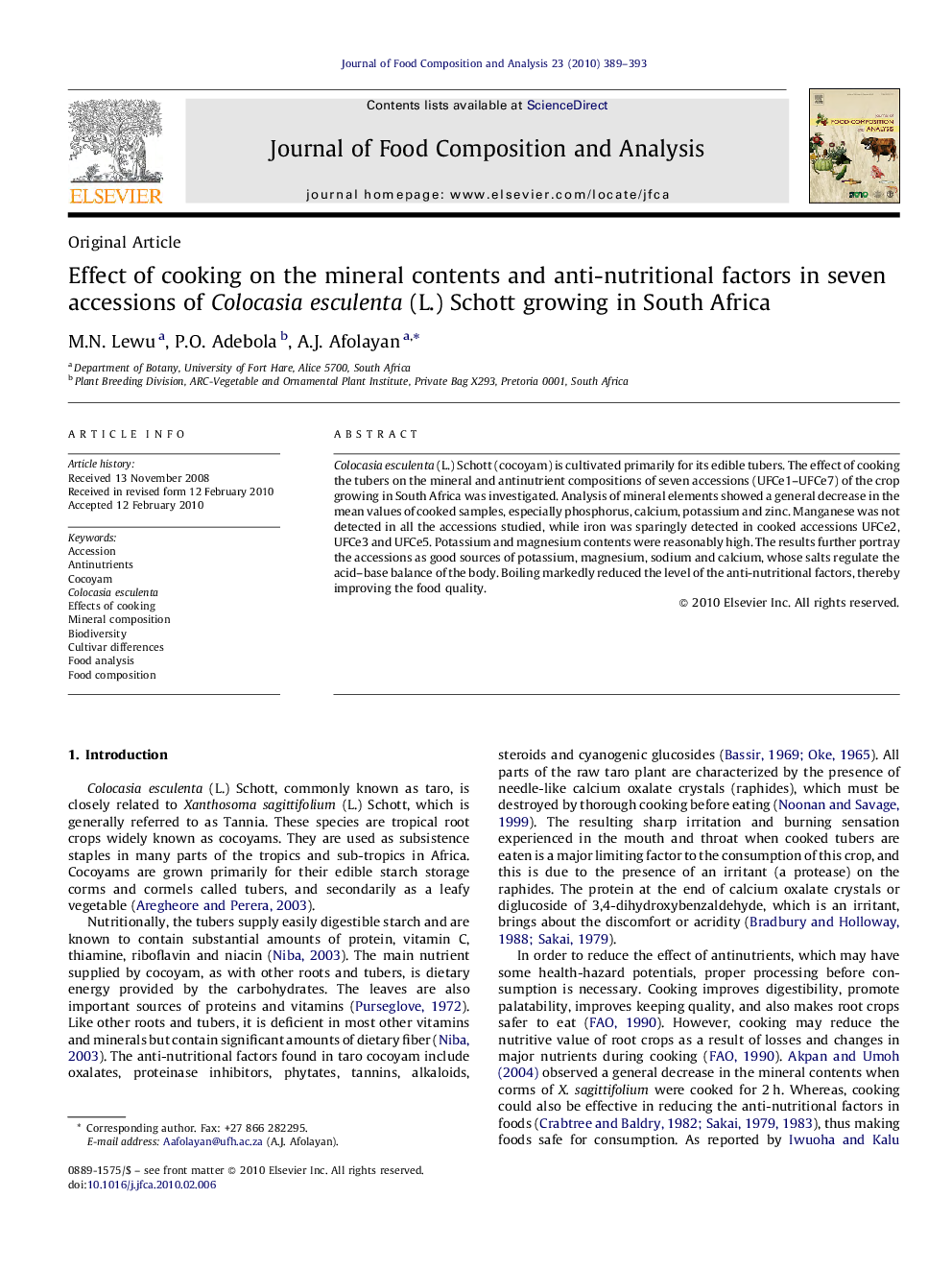| Article ID | Journal | Published Year | Pages | File Type |
|---|---|---|---|---|
| 1218531 | Journal of Food Composition and Analysis | 2010 | 5 Pages |
Colocasia esculenta (L.) Schott (cocoyam) is cultivated primarily for its edible tubers. The effect of cooking the tubers on the mineral and antinutrient compositions of seven accessions (UFCe1–UFCe7) of the crop growing in South Africa was investigated. Analysis of mineral elements showed a general decrease in the mean values of cooked samples, especially phosphorus, calcium, potassium and zinc. Manganese was not detected in all the accessions studied, while iron was sparingly detected in cooked accessions UFCe2, UFCe3 and UFCe5. Potassium and magnesium contents were reasonably high. The results further portray the accessions as good sources of potassium, magnesium, sodium and calcium, whose salts regulate the acid–base balance of the body. Boiling markedly reduced the level of the anti-nutritional factors, thereby improving the food quality.
